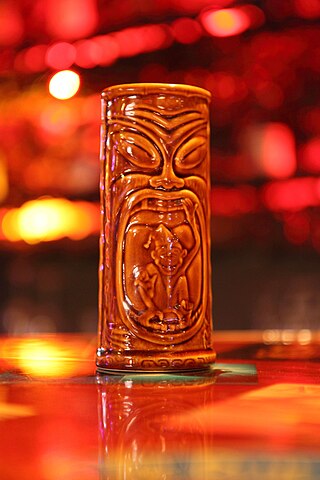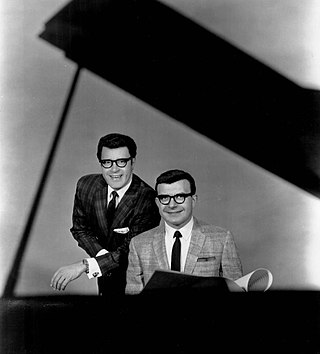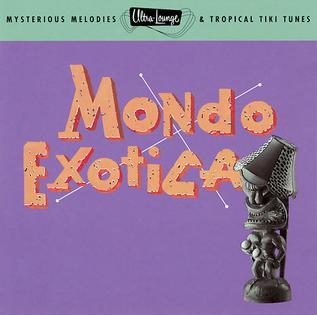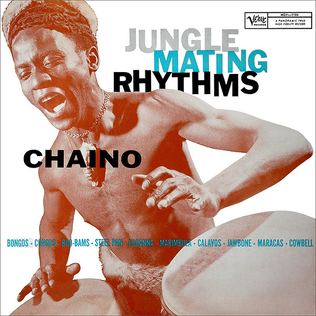Related Research Articles

Juan García Esquivel, often known mononymously as Esquivel!, was a Mexican band leader, pianist, and composer for television and films. He is recognized today as one of the foremost exponents of a sophisticated style of largely instrumental music that combines elements of lounge music and jazz with Latin flavors. Esquivel is sometimes called "The King of Space Age Pop" and "The Busby Berkeley of Cocktail Music", and is considered one of the foremost exponents of a style of late 1950s-early 1960s quirky instrumental pop that became known as "Space Age Bachelor Pad Music".
Traditional pop is Western pop music that generally pre-dates the advent of rock and roll in the mid-1950s. The most popular and enduring songs from this era of music are known as pop standards or American standards. The works of these songwriters and composers are usually considered part of the canon known as the "Great American Songbook". More generally, the term "standard" can be applied to any popular song that has become very widely known within mainstream culture and recorded by many artists.
Lucia Pamela was an American musician, nightclub singer, bandleader, and eccentric. She is remembered today largely for a science fiction themed musical album and coloring book concerning an imaginary trip to the Moon.

Tiki culture is an American-originated art, music, and entertainment movement inspired by Polynesian, Melanesian, and Micronesian cultures, and by Oceanian art. Influential cultures to Tiki culture include Australasia, Melanesia, Micronesia, Polynesia, the Caribbean Islands, and Hawaii. The name comes from Tiki, the Māori name for the first human, often represented in the form of hei-tiki, a pendant and important taonga. The hei-tiki was often appropriated by Europeans as a commercialised good luck charm, hence the name of Tiki culture. Despite spanning over 10,000 miles and including many different unrelated cultures, religions, and languages, Tiki aesthetic is considered by some to be amalgamated into one "fantasia of trans-Pacific cultures" and "colonial nostalgia". Because of this, and the simplistic view of the Pacific taken by the aesthetic, Tiki culture has often proved controversial.

Stereolab are an Anglo-French avant-pop band formed in London in 1990. Led by the songwriting team of Tim Gane and Lætitia Sadier, the group's sound features influences from krautrock and 1960s French pop music, often incorporating a repetitive motorik beat with the use of vintage electronic keyboards and female vocals sung in English and French. Their lyrics have political and philosophical themes influenced by the Surrealist and Situationist art movements. While performing, they play in a more feedback-driven and guitar-oriented style. From the mid-1990s, the band began to draw from funk, jazz and Brazilian music.
Easy listening is a popular music genre and radio format that was most popular during the 1950s to the 1970s. It is related to middle of the road (MOR) music and encompasses instrumental recordings of standards, hit songs, non-rock vocals and instrumental covers of selected popular rock songs. It mostly concentrates on music that pre-dates the rock and roll era, characteristically on music from the 1940s and 1950s. It was differentiated from the mostly instrumental beautiful music format by its variety of styles, including a percentage of vocals, arrangements and tempos to fit various parts of the broadcast day.
Exotica is a musical genre that was popular during the 1950s to mid-1960s with Americans who came of age during World War II. The term was coined by Simon "Si" Waronker, Liberty Records co-founder and board chairman, named after the 1957 Martin Denny album Exotica. The musical colloquialism exotica means tropical ersatz, the non-native, pseudo experience of insular Oceania, Southeast Asia, Hawaii, the Amazon basin, the Andes, the Caribbean and tribal Africa. Denny described the musical style as "a combination of the South Pacific and the Orient...what a lot of people imagined the islands to be like...it's pure fantasy though." While the South Seas forms the core region, exotica reflects the "musical impressions" of every place from standard travel destinations to the mythical "shangri-las" dreamt of by armchair safari-ers.
Lounge music is a type of easy listening music popular in the 1950s and 1960s. It may be meant to evoke in the listeners the feeling of being in a place, usually with a tranquil theme, such as a jungle, an island paradise or outer space. The range of lounge music encompasses beautiful music–influenced instrumentals, modern electronica, while remaining thematically focused on its retro–space age cultural elements. The earliest type of lounge music appeared during the 1920s and 1930s, and was known as light music.
Dance-pop is a genre of electronic dance music that originated in the late 1970s to early 1980s. It is generally uptempo music intended for nightclubs with the intention of being danceable but also suitable for contemporary hit radio. Developing from a combination of dance and pop with influences of disco, post-disco and synth-pop, it is generally characterised by strong beats with easy, uncomplicated song structures which are generally more similar to pop music than the more free-form dance genre, with an emphasis on melody as well as catchy tunes. The genre, on the whole, tends to be producer-driven, despite some notable exceptions.
Irwin Chusid is a journalist, music historian, radio personality, record producer, and self-described "landmark preservationist". His stated mission has been to "find things on the scrapheap of history that I know don't belong there and salvage them." Those "things" have included such previously overlooked but now-celebrated icons as composer/bandleader/electronic music pioneer Raymond Scott, Space Age Pop avatar Esquivel, illustrator/fine artist Jim Flora, various outsider musicians, and The Langley Schools Music Project. Chusid calls himself "a connoisseur of marginalia," while admitting he's "a terrible barometer of popular taste."
Combustible Edison were an American neo-lounge music group founded in the early 1990s in Providence, Rhode Island. They were one of several lounge acts that led a brief resurgence of interest in the genre during the mid-1990s.

Schizophonic! is an album by the American lounge band Combustible Edison, released in 1996.
Chamber pop is a music genre that combines rock music with the intricate use of strings, horns, piano, and vocal harmonies, and other components drawn from the orchestral and lounge pop of the 1960s, with an emphasis on melody and texture.

Ferrante & Teicher were a duo of American pianists known for their clever arrangements of familiar classical pieces, movie soundtracks, and show tunes, as well as their signature style of florid, intricate, and fast-paced piano playing performances.

Ultra-Lounge is a series of compilation CDs released by Capitol Records, featuring music predominantly from the 1950s and 1960s in genres such as exotica, space age pop, mambo, television theme songs, and lounge. Many of the volumes have since been made available for purchase via digital download.

Leon "Chaino" Johnson, the self-styled "percussion genius of Africa," was an American bongo player. After touring for several years on the Chitlin' Circuit, he released several albums and became popular with listeners of exotica music in the late 1950s and early 1960s. In the promotion of his albums, a fictional biography was developed, depicting Chaino as an orphan from a lost tribe in central Africa who had been rescued by a missionary after his tribe had been massacred. Chaino was actually born in Philadelphia and raised in Chicago.

Orienta is an album by The Markko Polo Adventurers released in 1959. The album was produced by Simon Rady, arranged and conducted by Gerald Fried and recorded in stereo in Hollywood, California. The album uses a combination of sound effects and Asian-inspired music to tell humorous vignettes. Its suggestive cover art features a photograph by Murray Laden.

Polynesian Fantasy is an album by The Out-Islanders released in 1961. The Out Islanders was a one-time combination of many of music industry's leading side men brought together by Billy May, who arranged and conducted the album, and Charlie Barnet, who played saxophone on the album.
Robert Toomey, publicly known as Brother Cleve, was an American musician, DJ, record producer, mixologist, and writer. Known as the godfather of the local bar and cocktail scenes in Boston, Massachusetts, Cleve grew up in nearby Medford.

Latin-esque is a studio album from the Mexican bandleader, pianist, and composer Juan García Esquivel and his orchestra. The album, released in 1962 on the RCA Victor label, includes both Esquivel's original compositions and his arrangements of Latin classics. The album was released as part of the "RCA Stereo Action" series.
References
- ↑ Pulse (Monthly music digest of Tower Records/Video) #164 October 1997 Page 57 Article: "Catalog Rolling: How Record Labels Decide What Titles to Re-Release" (article begins on page 42)
- 1 2 3 "the 1950s and 1960s - an era obsessed with technological advancements and new frontiers. The covers depict happy families, comfortable homes, and cocktail parties. Space Age Pop is the musical interpretation of these dreams. It comprises the eerie, mesmerizing sounds of Mood music, the Polynesian, Hawaiian, Caribbean, and jungle melodies of Exotica; the hi-fidelity and stereo-inspired sounds of bachelor pad music; and the dream, seductive rhapsodies of cocktail tunes." Page 1, Exotiquarium: Album Art from the Space Age, Jennifer McKnight-Trontz and Lenny Dee, St. Martin's Press Music/Songbooks, 1999, ISBN 0-312-20133-8
- ↑ "Space Age Pop developed out of America's insatiable appetite for the new and improved, providing grown-ups with the music they wanted: seductive moods, primitive beats, and fantastic effects.", Page 6, Exotiquarium: Album Art from the Space Age, Jennifer McKnight-Trontz and Lenny Dee, St. Martin's Press Music/Songbooks, 1999, ISBN 0-312-20133-8
- 1 2 "What IS Space Age Pop?--Some Definitions". www.spaceagepop.com. Retrieved 2023-09-17.
- ↑ "The History of Space Age Pop" liner notes by Irwin Chusid, Space Age Pop Vol 1: Melodies and Mischief, RCA Records 1995
- 1 2 "Ten Basic Space Age Pop Albums". www.spaceagepop.com. Retrieved 2023-09-17.
- ↑ "The Songs of Space Age Pop Music". spaceagepop.com. Retrieved 2023-09-18.
- ↑ Borgerson, Janet (2017). Designed for hi-fi living : the vinyl LP in midcentury America. Schroeder, Jonathan E., 1962-. Cambridge, Massachusetts: MIT Press. ISBN 9780262036238. OCLC 958205262.
- ↑ "FOR BETTER OR WORSE, LOUNGE MUSIC (YES, THAT EASY-LISTENING DRECK) HAS RETURNED, SO . . ". Chicago Tribune. 1996-02-19. Retrieved 2023-09-18.
- ↑ Records, Sub Pop. "Combustible Edison". Sub Pop Records. Retrieved 2023-09-18.
- ↑ Klein, Joshua (2001-08-29). "What the Bleep? Stereolab Does Some Actual Tunes". Washington Post. ISSN 0190-8286 . Retrieved 2023-09-18.
- ↑ Harvey, Eric (July 23, 2017). "Stereolab: Dots and Loops Album Review". Pitchfork Media . Retrieved 2023-09-18.
- ↑ Huey, Steve, "Mr. Bungle - California Album Reviews, Songs & More | AllMusic", Allmusic , retrieved 2023-09-18
- ↑ "Trevor Dunn talks about the making of MR. BUNGLE'S 'California'". Faith No More Followers. 2017-08-05. Retrieved 2023-09-18.